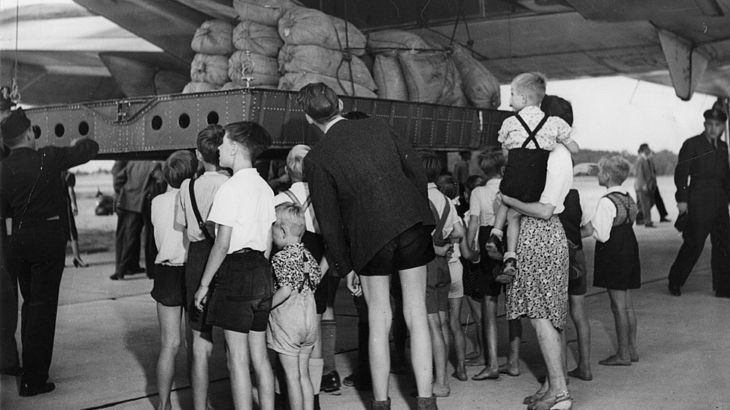In October of 1989, hundreds of thousands of East German citizens demonstrated in Leipzig, following a pattern of demonstrations for freedom and human rights throughout Eastern Europe and following the first ever free election in a Communist country, Poland, in the Spring of 1989. Hungary had opened its southern border with Austria and East Germans seeking a better life were fleeing there. Czechoslovakia had done likewise on its western border and the result was the same.
The East German government had been on edge and was seeking to reduce domestic tensions by granting limited passage of its citizens to West Germany. And that’s when the dam broke.
On November 9, 1989, thousands of elated East Berliners started pouring into West Berlin. There was a simple bureaucratic error earlier in the day when an East German official read a press release he hadn’t previously studied and proclaimed that residents of Communist East Berlin were permitted to cross into West Berlin, freely and, most importantly, immediately. He had missed the end of the release which instructed that passports would be issued in an orderly fashion when government offices opened the next day.
This surprising information about free passage was spread throughout East Berlin, East Germany and, indeed, around the word like a lightning bolt. Massive crowds gathered near-instantaneously and celebrated at the heavily guarded Wall gates which, in a party-like atmosphere amid total confusion, were opened by hard core communist yet totally outmanned Border Police, who normally had orders to shoot-to-kill anyone attempting to escape. A floodgate was opened and an unstoppable flood of freedom-seeking humanity passed through, unimpeded.
Shortly thereafter, the people tore down the Wall with every means available. The clarion bell had been sounded and the reaction across communist Eastern Europe was swift. Communist governments fell like dominoes.
The Wall itself was a glaring symbol of totalitarian communist repression and the chains that bound satellite countries to the communist Soviet Union. But the “bureaucratic error” of a low-level East German functionary was the match needed to set off an explosion of freedom that had been years in-the-making throughout the 1980s. And that is critical to understanding just why the Cold War came to an end, precipitously and symbolically, with the fall of the Wall.
With the election of Ronald Reagan to the presidency of the United States, Margaret Thatcher to Prime Minister of Great Britain and the Polish Cardinal, Jean Paul II becoming Pope of the Roman Catholic Church, the foundation was laid in the 1980s for freedom movements in Soviet Communist-dominated Eastern Europe to evolve and grow. Freedom lovers and fighters had friends in high places who believed deeply in their cause. These great leaders of the West understood the enormous human cost of communist rule and were eager to fight back in their own unique and powerful way, leading their respective countries and allies in the process.
Historic figures like labor leader Lech Walesa, head of the Polish Solidarity Movement and Czech playwright Vaclav Havel, an architect of the Charter 77 call for basic human rights had already planted the seeds for historic change. Particularly in Poland, the combination of Solidarity and the Catholic Church, supported staunchly in the non-communist world by Reagan and Thatcher, anti-communism flourished despite repression and brutal crackdowns.
And then, there was a new General Secretary of the Communist Party of the Soviet Union, Mikhail Gorbachev. When he came to power in 1985, he sought to exhort workers to increase productivity in the economy, stamp out the resistance to Soviet occupation in Afghanistan via a massive bombing campaign and keep liquor stores closed till 2:00 pm. However, exhortation didn’t work and the economy continued to decline, Americans gave Stinger missiles to the Afghan resistance and the bombing campaign failed and liquor stores were being regularly broken into by angry citizens not to be denied their vodka. The Afghan war was a body blow to a Soviet military, ‘always victorious’ and Soviet mothers protested their sons coming back in body bags. The elites (“nomenklatura”) were taken aback and demoralized by what was viewed as a military debacle in a then Fourth World country. “Aren’t we supposed to be a superpower?”
Having failed at run-of-the-mill Soviet responses to problems, Gorbachev embarked on a bold-for-the-USSR effort to restructure the failing Soviet economy via Perestroika which sought major reform but within the existing burdensome central-planning bureaucracy. On the political front, he introduced Glasnost, opening discussion of social and economic problems heretofore forbidden since the USSR’s beginning. Previously banned books were published. Working and friendly relationships with President Reagan and Margaret Thatcher were also initiated.
In the meantime, America under President Reagan’s leadership was not only increasing its military strength in an accelerated and expensive arms race but was also opposing Soviet-backed communist regimes and their so-called “wars of national liberation” all over the world. The cold war turned hot under the Reagan Doctrine. President Reagan also pushed “Star Wars,” an anti-ballistic missile system that could potentially neutralize Soviet long-range missiles. Star Wars, even if off in the future, worried Gorbachev’s military and communist leadership of an electronically and computer technology-challenged Soviet Union.
Competing economically and militarily with a resurgent anti-communist American engine firing on all cylinders became too expensive for the economically and technologically disadvantaged Soviet Union. There are those who say the USSR collapsed of its own weight, but they are wrong. If that were so, a congenitally overweight USSR would have collapsed a lot earlier. Gorbachev deserves a lot of credit to be sure but there should be no doubt, he and the USSR were encouraged to shift gears and change course. Unfortunately for communist rulers, their reforms initiated a downward spiral in their ability to control their citizens. Totalitarian control was first diminished and then lost. Author’s note: A lesson which was not lost on the rulers of Communist China.
Summing up: A West with economic and military backbone plus spiritual leadership, combined with brave dissident and human rights movements in Eastern Europe and the USSR itself, forced changes in behavior of the communist monolith. Words and deeds mattered. When Ronald Reagan called the Soviet Union an “evil empire” before the British Parliament, the media and political opposition worldwide was aghast… but in the Soviet Gulag, political prisoners rejoiced. When President Reagan said “Mr. Gorbachev, tear down this wall,” consternation reigned in the West… but the people from East Germany to the Kremlin heard it loud and clear.
And so fell the Berlin Wall.
The Honorable Don Ritter, Sc. D., served seven terms in the U.S. Congress from Pennsylvania including both terms of Ronald Reagan’s presidency. Dr. Ritter speaks fluent Russian and lived in the USSR for a year as a Nation Academy of Sciences post-doctoral Fellow during Leonid Brezhnev’s time. He served in Congress as Ranking Member of the Congressional Helsinki Commission and was a leader in Congress in opposition to the Soviet invasion and occupation of Afghanistan.
Click Here to have the NEWEST essay in this study emailed to your inbox every day!
Click Here to view the schedule of topics in our 90-Day Study on American History.

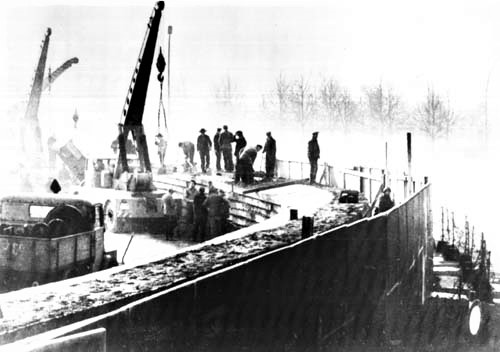 National Archives
National Archives Dirck Halstead - U.S. Marines in Japan Homepage
Dirck Halstead - U.S. Marines in Japan Homepage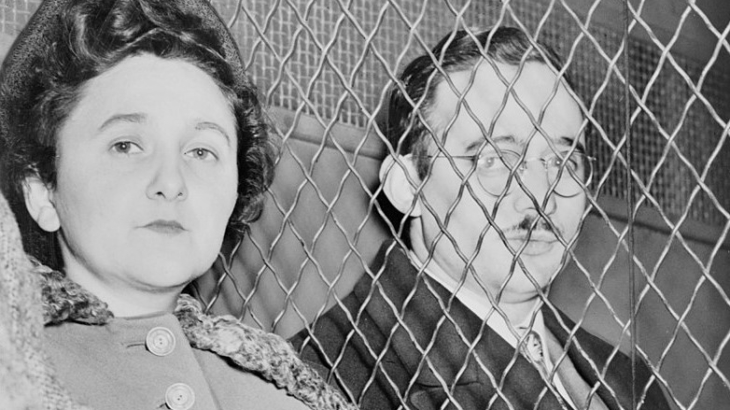 Roger Higgins, photographer from "New York World-Telegram and the Sun" - Library of Congress Prints and Photographs Division. New York World-Telegram and the Sun Newspaper Photograph Collection.
Roger Higgins, photographer from "New York World-Telegram and the Sun" - Library of Congress Prints and Photographs Division. New York World-Telegram and the Sun Newspaper Photograph Collection. 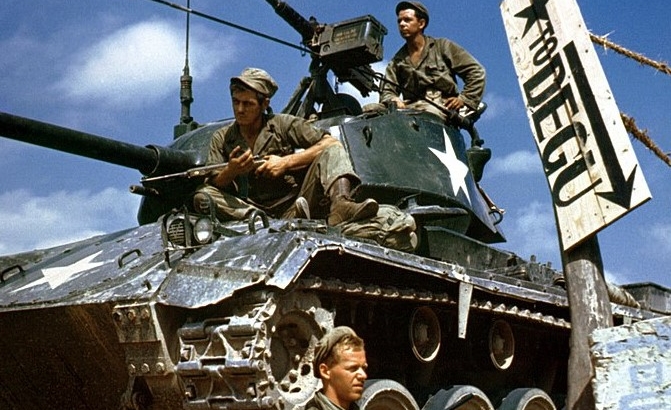
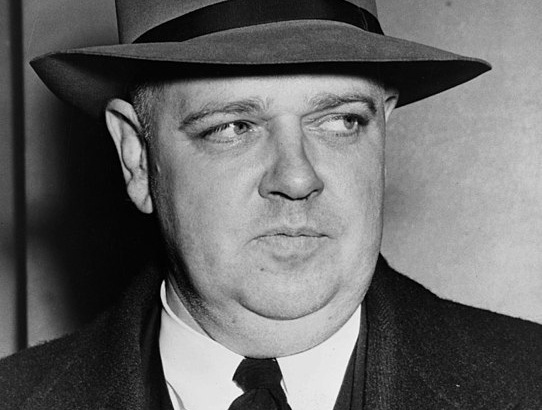 Library of Congress, Whittaker Chambers Photo
Library of Congress, Whittaker Chambers Photo